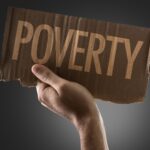Dear Mankind and most favoured of my children
You will recall my earliest blogs ( Mother Earth blogs ) welcomed the Global initiative to develop the Sustainable Development Goals ( SDGs) to help create a safer and fairer world and I was happy that Mankind had at last understood the need to live more sustainably and harmoniously with other living things on this, our only, home. Some good progress was starting to be being made in some areas but sadly most of this encouraging activity was brought to an abrupt halt or in some cases, even reversed by the COVID 19 Pandemic.
This blog on SDG 17 – Partnerships for the Goals is the next in a series of updates to review the effects of the COVID 19 Pandemic on the aspirations and targets of each of the original 17 SDGS and to look ahead to the prospects in each sector.
The Covid pandemic has severely tested multilateral and global partnerships that were already shaky. Although Global Official Development Assistance ( ODA) and Remittance Flows declined less than expected in 2020, Foreign Direct Investment ( FDI) to low-income countries dropped by 40%. This has caused severe economic distress in many countries and limited their ability to make investments in recovery, vaccines, climate action and sustainability. Apart from renewable energy investment , investment activity fell sharply across all SDG sectors with the fall most pronounced in poorer countries.
Exports from developing countries and least developed countries were supposed to be given preferential treatment and low tariffs so that their exports could be doubled by 2020 from the 2011 levels but this was not achieved. Agriculture(a particularly important sector for developing countries ), continued to face the highest ( protectionist ) tariffs imposed by the developed countries in 2019 despite their earlier promises on preferential treatment.
In 2019, 86% of the population in Europe and North America were using the Internet so most people were able to work, shop and even learn remotely during the Covid lockdowns but nearly half of the Global population (3.7 billion people) are still not online. Significant efforts should be made to increase access to Internet in the developing world.
The Pandemic has amplified health and income inequalities. For example, persons over 65 were only 14% of confirmed cases but 80% of deaths , vaccine distribution in Europe and North America was 68 per hundred people but in sub-Saharan Africa, fewer than 2 people per hundred got vaccines. For those with disabilities 1 in 3 personally experienced discrimination with higher levels of discrimination occurring to women. There was also a drastic drop in international tourism and this disproportionately affected small island developing States whose economies were totally dependent on tourism.
Mother Earth
Sources : extracted from The Sustainable Development Goals Reports 2019 -2021 , United Nations, New York







